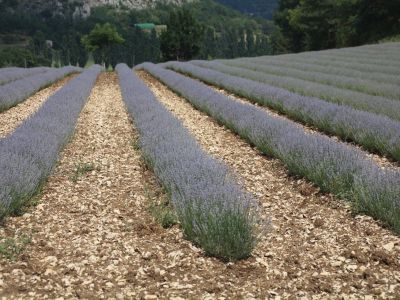When it comes to lavender mulch, what type of mulch is best and what mulches should be avoided? Read on to learn more.
How To Mulch Lavender
Lavender requires well-drained soil and plenty of space to allow air circulation around plants. When it comes to lavender mulching, the goal is to keep the foliage and the crown as dry as possible. This means using about an inch (2.5 cm.) of mulch that won’t trap moisture around the roots. Suitable mulch for lavender includes:
Small, crushed rockPea gravel Nut shellsPine needlesOyster shellsCoarse sand
The following mulches should be avoided:
Wood or bark mulchCompostStraw (almost always)Fine sand
Using Straw or Evergreen Boughs when Mulching Lavender
Straw should nearly always be avoided. However, if you live in an arid climate north of USDA hardiness zone 9 and your soil drains well, you can apply a layer of straw to provide a little extra insulation against punishing winter cold. You can also lay evergreen boughs over lavender plants. Apply straw after the ground freezes and the plants have gone completely dormant. Never use straw if you live in a moist climate because wet straw is likely to rot lavender plants. Don’t allow straw to pile up against the crown. Be sure to remove straw mulch for lavender as soon as the danger of extreme cold has passed.
